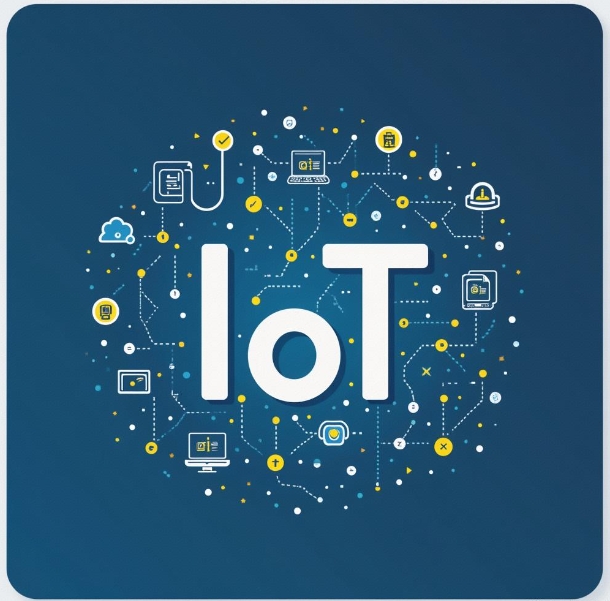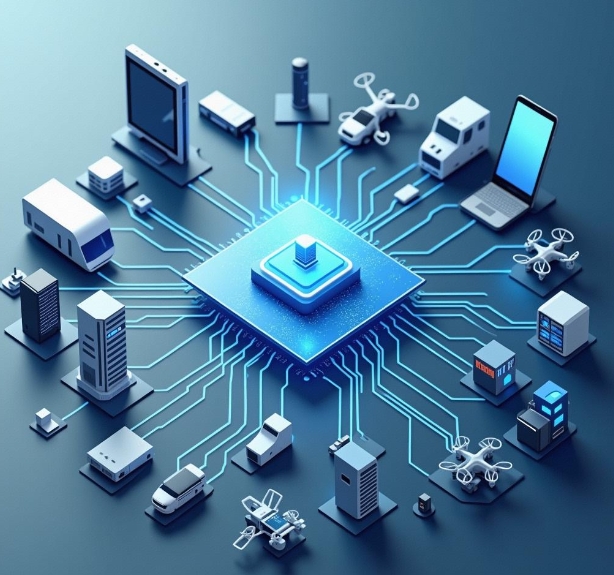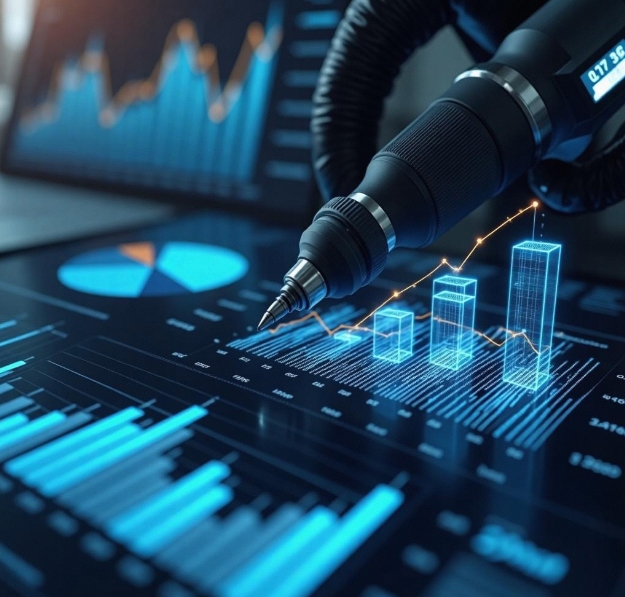Intelligent Upgrade of Equipment: Technological Innovation in the Era of Intelligence
- latest articles
- 1.DApp Development & Customization: Merging Diverse Market Needs with User Experience 2.Analysis of the Core Technical System in DApp Project Development 3.How to achieve cross-chain interoperability in Web3 projects? 4.How does the tokenization of points reconstruct the e-commerce ecosystem? 5.How to Set and Track Data Metrics for a Points Mall? 6.What is DApp Development? Core Concepts and Technical Analysis 7.Inventory of commonly used Web3 development tools and usage tips 8.Development of a Distribution System Integrated with Social E-commerce 9.Six Key Steps for Businesses to Build a Points Mall System 10.What is DApp Development? A Comprehensive Guide from Concept to Implementation
- Popular Articles
- 1.Future Trends and Technology Predictions for APP Development in 2025 2.Analysis of the DeFi Ecosystem: How Developers Can Participate in Decentralized Finance Innovation 3.From Zero to One: How PI Mall Revolutionizes the Traditional E-commerce Model 4.DAPP Development | Best Practices for Professional Customization and Rapid Launch 5.Recommended by the Web3 developer community: the most noteworthy forums and resources 6.From Cloud Computing to Computing Power Leasing: Building a Flexible and Scalable Computing Resource Platform 7.Shared Bike System APP: The Convenient Choice in the Era of Smart Travel 8.How to Develop a Successful Douyin Mini Program: Technical Architecture and Best Practices 9.How to Create a Successful Dating App: From Needs Analysis to User Experience Design 10.From Design to Development: The Complete Process of Bringing an APP Idea to Life
With the rapid development of cutting-edge technologies such as information technology, the Internet of Things (IoT), artificial intelligence (AI), and big data, intelligence has become one of the core trends in technological innovation across various industries. The intelligent upgrade and transformation of equipment is a significant manifestation of this era. It not only changes the functions and structures of traditional equipment but also greatly enhances their efficiency and flexibility. Whether in industrial production, home life, transportation, or fields like healthcare and agriculture, intelligent equipment is continuously breaking through technical bottlenecks, driving various industries towards a more efficient, environmentally friendly, and precise future.
I. Background and Significance of Equipment Intelligence
The emergence and widespread adoption of intelligent equipment are inevitable outcomes of the development of the information age. In the past, equipment primarily relied on manual control and mechanical operation, with its functions and performance often limited by design and operational environments. Today, with advancements in sensor technology, embedded systems, wireless communication technology, and AI algorithms, equipment functions are gradually shifting towards "intelligence," enabling self-perception, decision-making, and regulation.
The significance of intelligent equipment upgrades is mainly reflected in the following aspects:
1. Improving Efficiency and Precision: Traditional equipment relies on manual operation, which is inefficient and prone to errors. Intelligent equipment can monitor conditions in real-time and self-adjust, significantly enhancing operational precision and efficiency. For example, smart manufacturing equipment can automatically detect product quality during production and adjust production parameters, thereby reducing costs and increasing product qualification rates.
2. Resource Conservation and Environmental Protection: Intelligent equipment can analyze and optimize resource usage efficiency in real-time, reducing energy waste and environmental pollution. For instance, smart air conditioners adjust their operation based on ambient temperature to minimize unnecessary energy consumption; intelligent water management systems monitor water quality and quantity, enabling more precise water resource allocation.
3. Enhancing User Experience: In the consumer sector, intelligent equipment can understand user needs through data analysis, providing more personalized services. The rise of smart homes and wearable devices has made people's lives more convenient and comfortable. For example, smart speakers can play music and control home devices based on voice commands, enabling more humanized interactions.
4. Strengthening Self-Maintenance and Self-Healing Capabilities: Traditional equipment often requires manual intervention and repair when malfunctions occur, whereas intelligent equipment can perform self-diagnosis and repair functions, automatically identifying and addressing issues. For example, smart network equipment can remotely diagnose problems and execute repairs, greatly improving reliability and maintainability.

II. Technological Foundations of Intelligent Equipment
The realization of equipment intelligence relies on the combined action of multiple technologies. The following are several key technologies:
1. Internet of Things (IoT)
The IoT is one of the foundational technologies for achieving equipment intelligence. It connects various devices through sensors, embedded systems, and communication technologies, forming a vast intelligent network. Through the IoT, equipment can obtain real-time information about the surrounding environment and transmit data to the cloud for processing and analysis, enabling corresponding decisions based on the results. For example, smart grids use IoT technology to monitor the operational status of power equipment in real-time, optimizing power distribution and usage.
2. Big Data and Cloud Computing
Big data and cloud computing provide robust data support and computational capabilities for equipment intelligence. By continuously collecting and analyzing data, intelligent equipment can predict operational status and optimize decisions. For instance, in smart factories, big data technology enables real-time monitoring of production line equipment. By analyzing vast amounts of historical data, potential equipment failures can be identified in advance, facilitating predictive maintenance.
3. Artificial Intelligence (AI)
AI is one of the core technologies for equipment intelligence. Through AI techniques such as machine learning and deep learning, intelligent equipment can autonomously learn and optimize decision-making. AI algorithms enable equipment to perform more complex tasks, such as visual recognition, speech recognition, and natural language processing. For example, intelligent security systems use AI technology to identify anomalies in surveillance footage and automatically issue alerts, enhancing the intelligence level of security prevention.
4. Edge Computing
Edge computing involves processing data closer to the source rather than transmitting all data to the cloud. It reduces latency and improves response speed, which is particularly important for intelligent equipment requiring real-time processing, such as autonomous vehicles and smart medical devices. For example, smart driving systems use edge computing to process data from onboard sensors in real-time, making driving decisions to ensure safety.
III. Application Areas of Equipment Intelligence Upgrades
The application of intelligent equipment is extensive, covering almost every corner of modern society. The following are several typical application areas:
1. Smart Manufacturing
Smart manufacturing is one of the most widely applied areas of equipment intelligence. In industrial production, intelligent equipment enables automation and fine-grained management of production processes through real-time data collection and analysis. For example, smart robots can adjust tasks based on production needs; intelligent sensors monitor equipment status in real-time, identifying potential faults early to prevent production line downtime.
With the introduction of the "Industry 4.0" concept, smart manufacturing has become a core direction for the global manufacturing transformation. Through technologies like big data, cloud computing, and IoT, smart manufacturing systems achieve comprehensive monitoring and optimization, ensuring every step of the production process is efficient and accurate.
2. Smart Home
Smart home systems utilize intelligent equipment upgrades to make household living more convenient and comfortable. Smart home devices include smart locks, smart lighting, smart air conditioners, and smart speakers, which can be remotely controlled and managed via mobile apps or voice assistants. For instance, smart air conditioners adjust indoor temperature based on household members' movements and weather forecasts; smart refrigerators monitor food storage status and remind users to purchase missing items.
3. Smart Healthcare
Intelligent upgrades in medical equipment improve traditional healthcare methods, enhancing diagnostic and treatment efficiency and precision. For example, smart wearable devices can monitor users' heart rate, blood pressure, and other physiological indicators in real-time, helping users better manage their health. Smart imaging devices use AI algorithms to analyze medical images, assisting doctors in accurate diagnoses. Intelligent surgical robots enable more precise operations, increasing success rates and recovery speeds.
4. Smart Transportation
Smart transportation systems use intelligent equipment to monitor and manage traffic conditions in real-time, improving road efficiency and reducing accidents. Smart traffic lights adjust signal cycles based on real-time traffic flow; smart parking systems guide drivers to available parking spaces. Additionally, smart transportation systems can integrate with autonomous driving technology to facilitate the widespread application of self-driving cars.

IV. Challenges and Future Prospects of Equipment Intelligence
Although equipment intelligence brings numerous benefits, there are still technical and social challenges in practical applications:
1. Data Privacy and Security Issues: Intelligent equipment requires the collection of large amounts of data, including personal privacy information. Improper data management can lead to privacy breaches and security incidents. Therefore, ensuring data security and privacy protection is a critical issue for intelligent equipment.
2. Technical Standards and Interoperability Issues: Currently, there is a wide variety of intelligent equipment, and devices from different manufacturers often differ significantly. Establishing unified technical standards to ensure interoperability between different devices is key to promoting the widespread adoption of equipment intelligence.
3. High Costs and Technical Barriers: Equipment intelligence often requires substantial technical investment and upgrade costs. For small and medium-sized enterprises or ordinary consumers, the price of intelligent equipment may be too high, hindering widespread adoption.
Despite these challenges, the prospects for equipment intelligence remain broad. As technology advances and costs decrease, intelligent equipment will become more widespread and play an increasingly important role across various industries. In the future, equipment intelligence will not only transform our work and lifestyles but also drive society towards a more efficient, intelligent, and sustainable direction.
Conclusion
The intelligent upgrade and transformation of equipment represent technological innovation in the intelligent era and are a hallmark of modern societal progress. From industrial production to daily life, intelligent equipment is gradually changing our world, enhancing our productivity and quality of life. With continuous technological innovation and deeper applications, the prospects for intelligent equipment will become even broader, ushering in a future that is more intelligent, efficient, and sustainable.
-

How does artificial intelligence technology transform the operational models of modern enterprises?
In the wave of the digital era, artificial intelligence (AI) technology has tran···
-

How to Utilize Artificial Intelligence for Precision Medicine and Health Management
With the rapid advancement of technology, artificial intelligence (AI) has demon···
-

Integration and Application of Artificial Intelligence and Robotics
In today's era of rapid technological advancement, the integration of artificial···

 Blockchain
Blockchain










